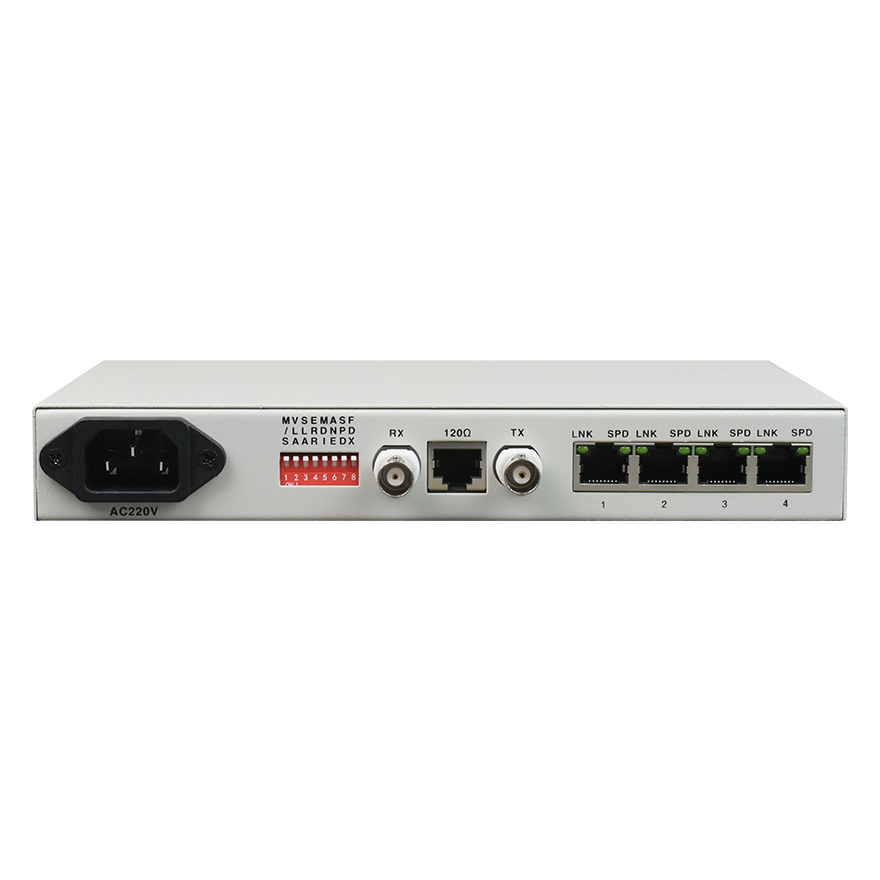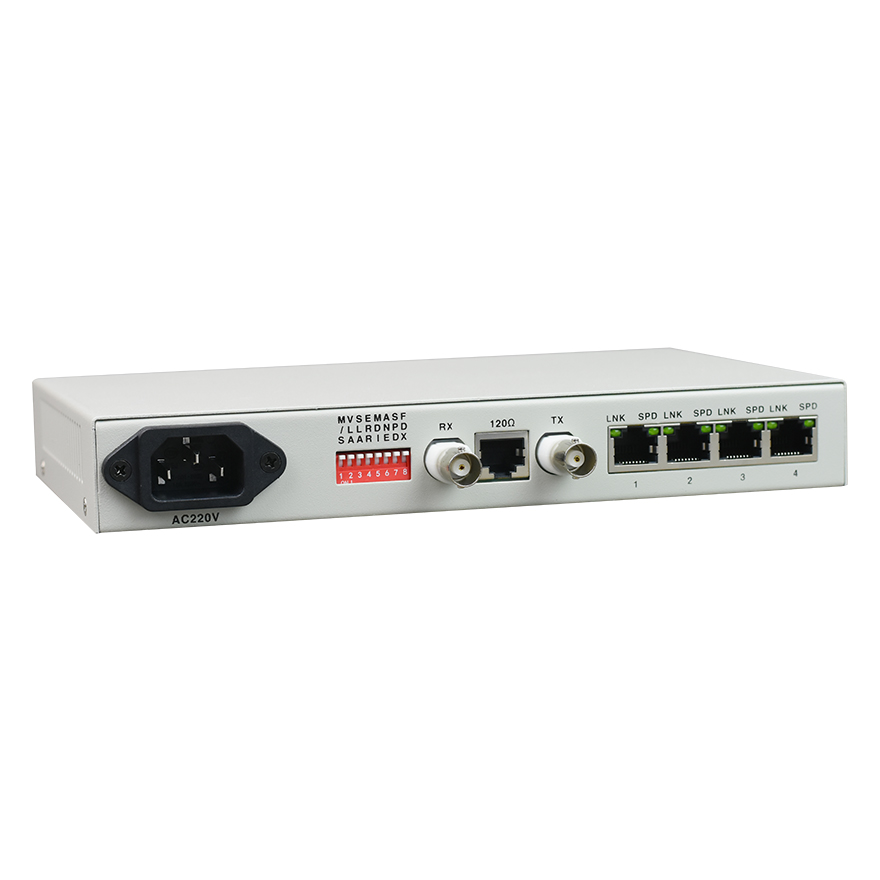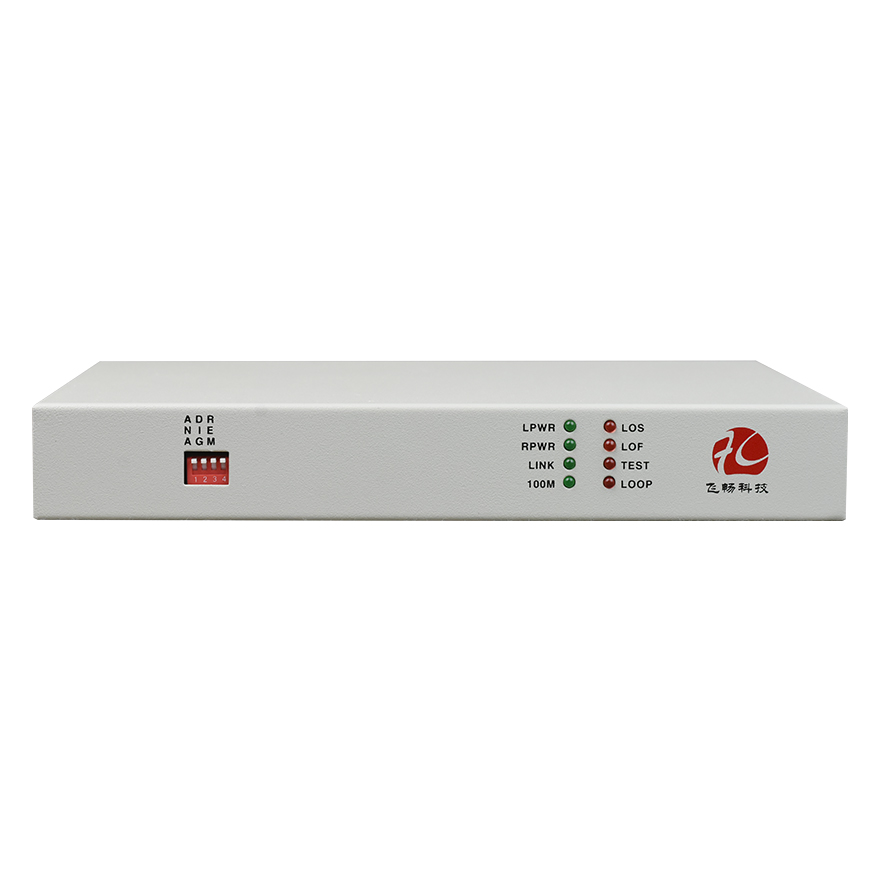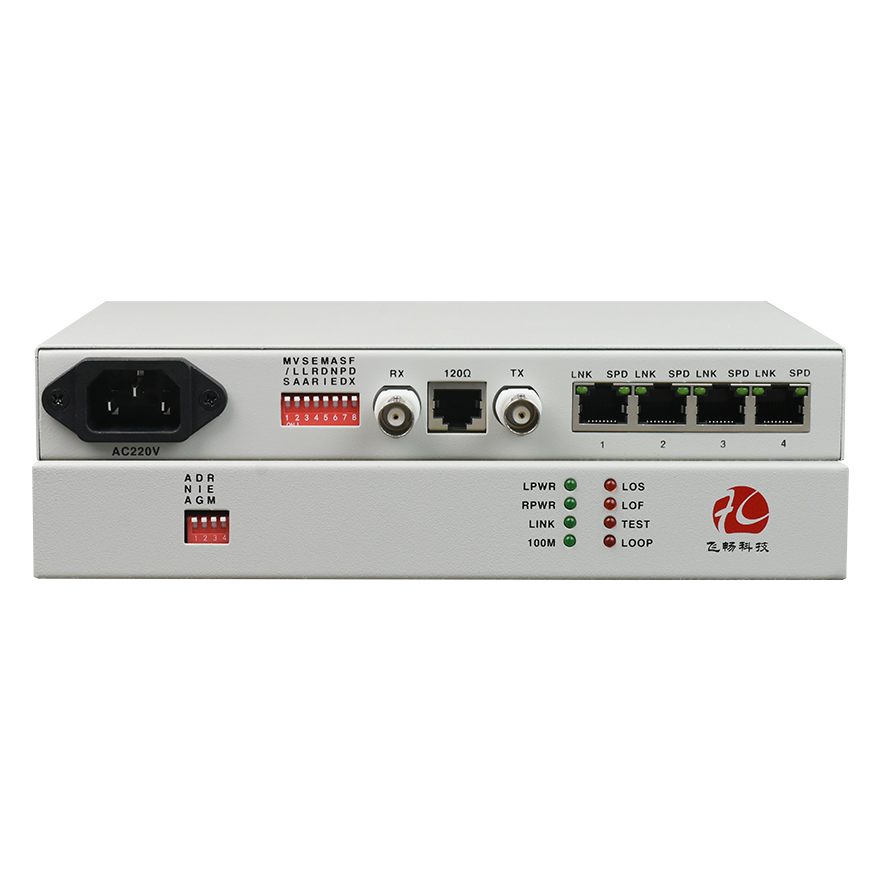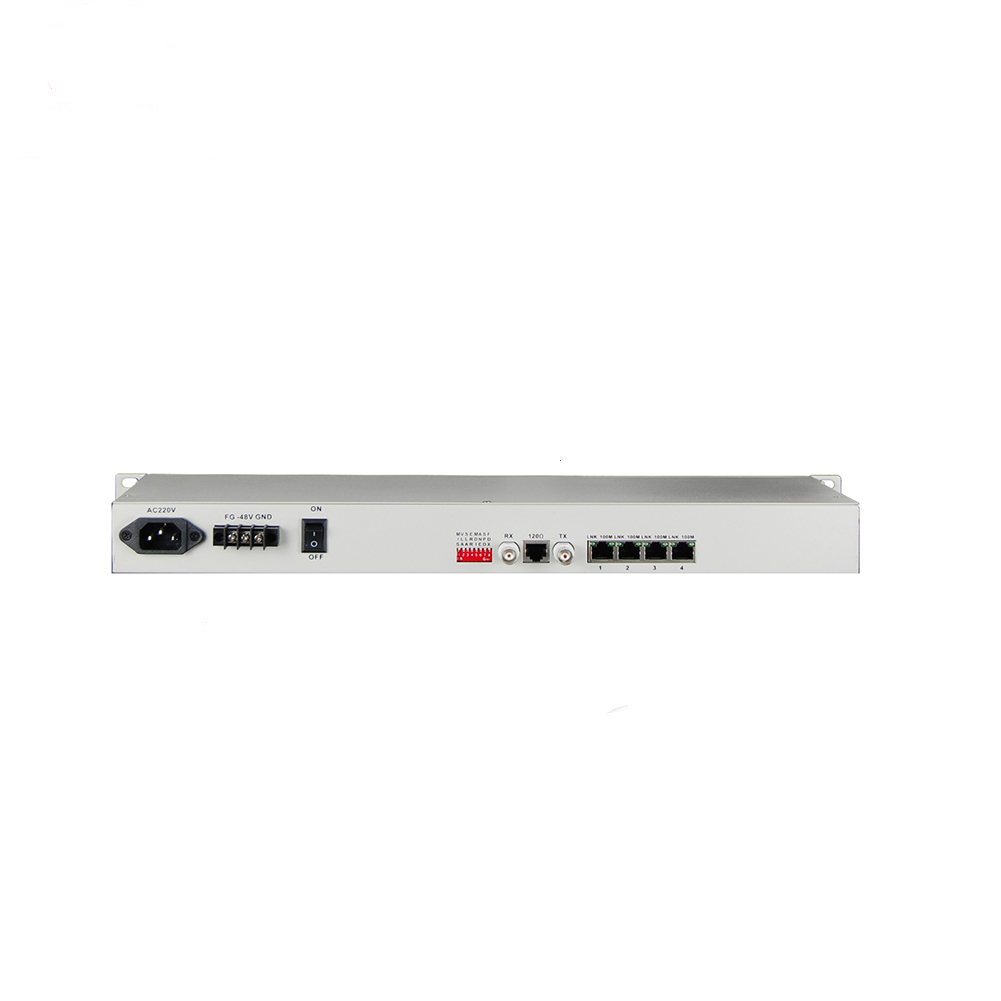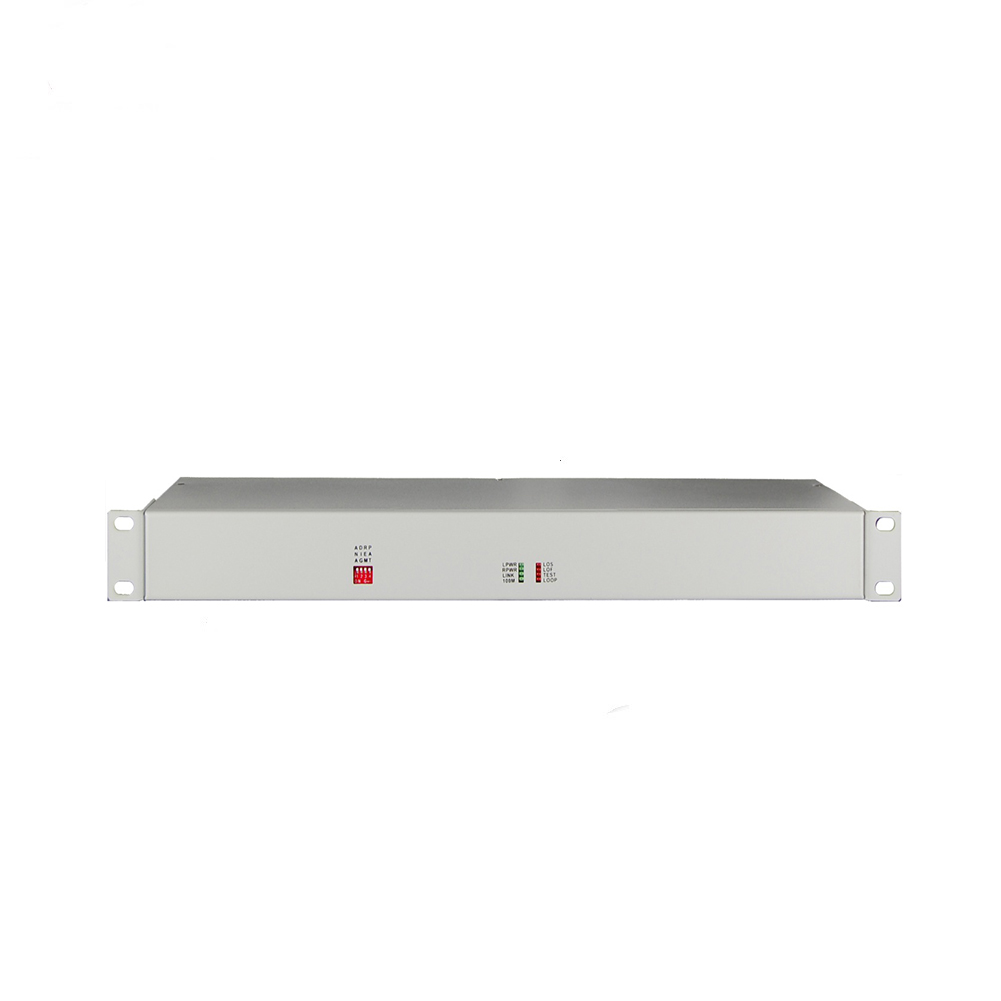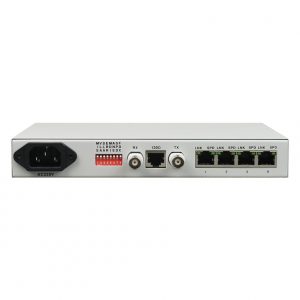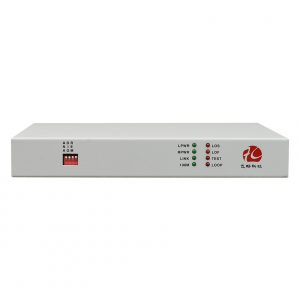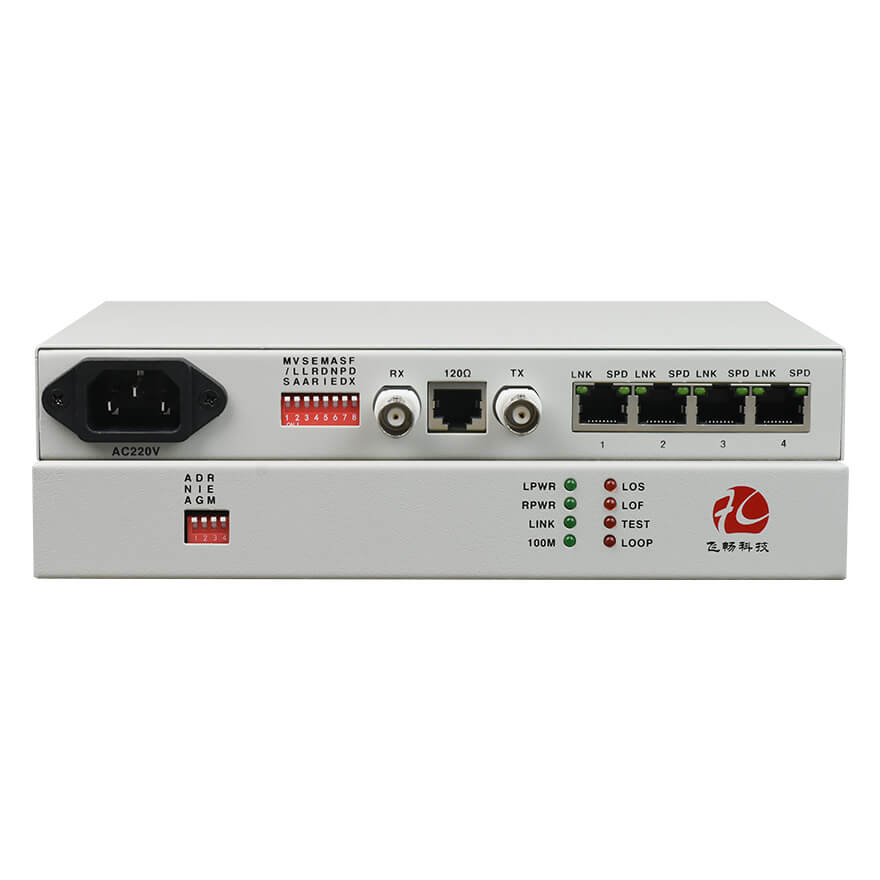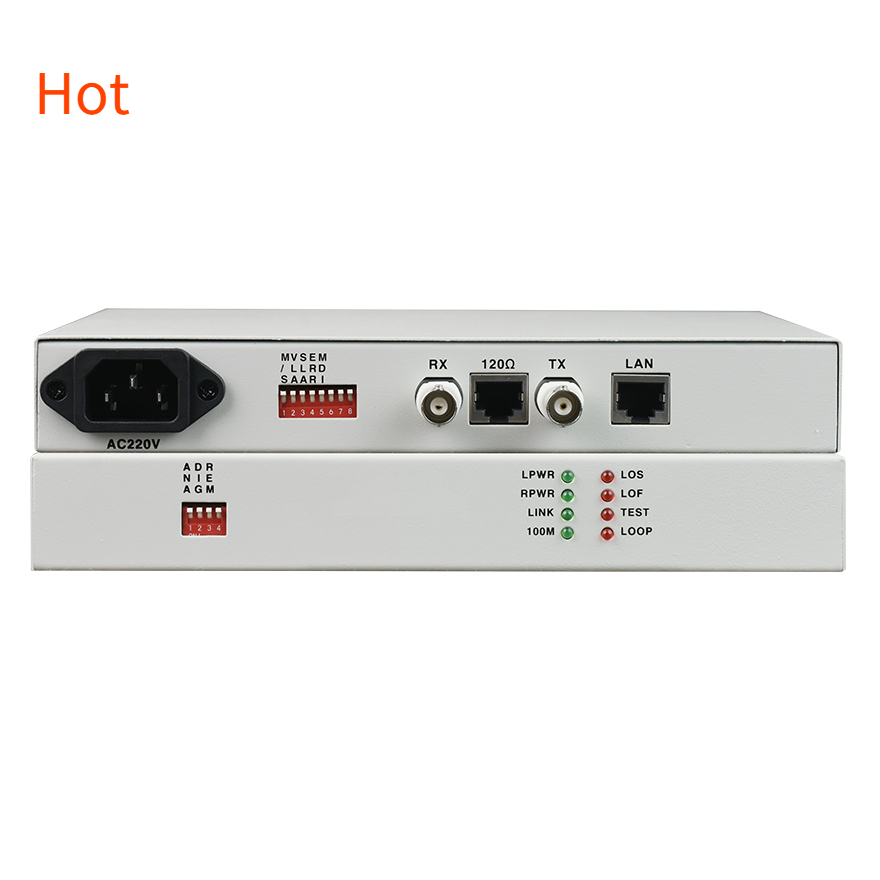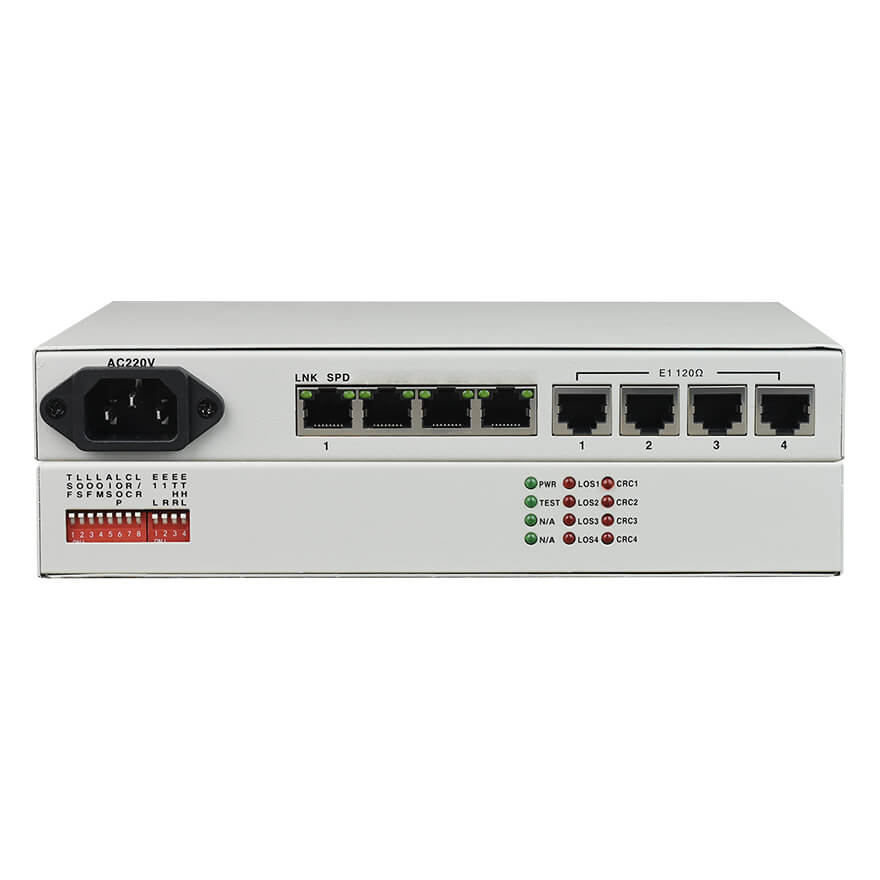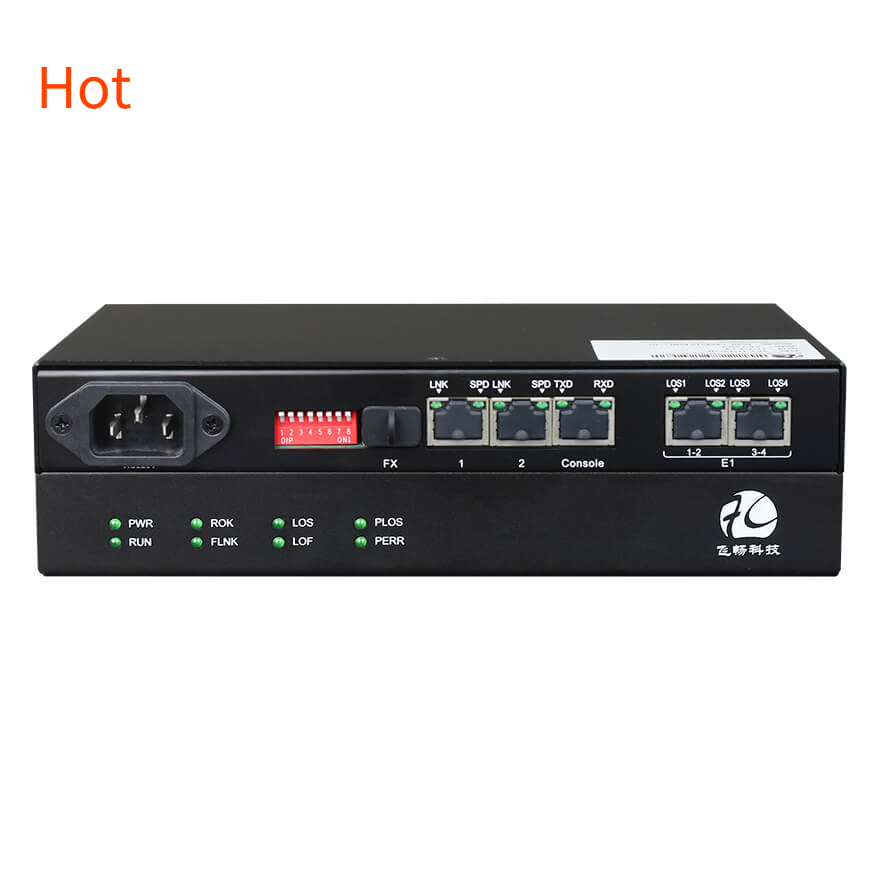● When the device is set to unframed mode (2048K), it can still monitor and control remote devices. The network management data does not occupy the user’s time slot, so it does not need to be set to framed mode, which saves the user’s E1 bandwidth;
● It can realize 4 channels of Ethernet data transmission over the E1 circuit;
● The device can detect E1 loopback and prevent the Ethernet port from sending packets with the same source and destination MAC addresses during loopback to avoid switch crashes;
● It can detect whether the E1 signal is lost or out of sync due to remote device shutdown or E1 line failure;
● It has a built-in dynamic Ethernet MAC address list (4096) with a local data frame filtering function;
● The device has E1 fault transfer function, which can be configured to not send a LINK signal to the Ethernet interface when there is a fault in the E1 line;
● The Ethernet interface supports jumbo frames (1916 Bytes);
● The 4 10/100M Ethernet interfaces can be isolated from each other to achieve independent communication;
● Ethernet interface supports 10/100M, half/full duplex auto-Negotiation, and AUTO-MDIX (adaptation for crossover and straight-through cables);
● It has an automatic reset function for Ethernet data monitoring to prevent crashes;
● It provides two clock modes: E1 master clock and E1 line slave clock;
● It provides 3 loopback modes: E1 local loopback (ANA), Ethernet local loopback (DIG), and Remote Ethernet loopback (REM);
● It supports both 120Ω/balanced and 75Ω/unbalanced impedance, without the need for additional configuration;
● It has a pseudo-random code test function (PATT), which is convenient for line commissioning and can be used as an E1 error code detector;
● The Ethernet port provides receive and send frame counters, receive error frame counters, and the E1 interface provides receive error frame counters;
● It can monitor the remote device temperature and voltage from the local device, and the temperature alarm threshold can be set;
● Support SNMP Network Management.
● It can form a topology structure: Ethernet-E1 bridge (A)-E1 fiber modem (B)-Ethernet fiber modem (C).



